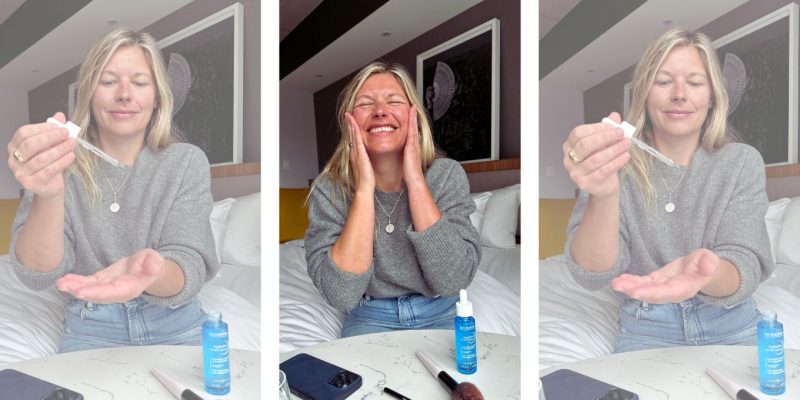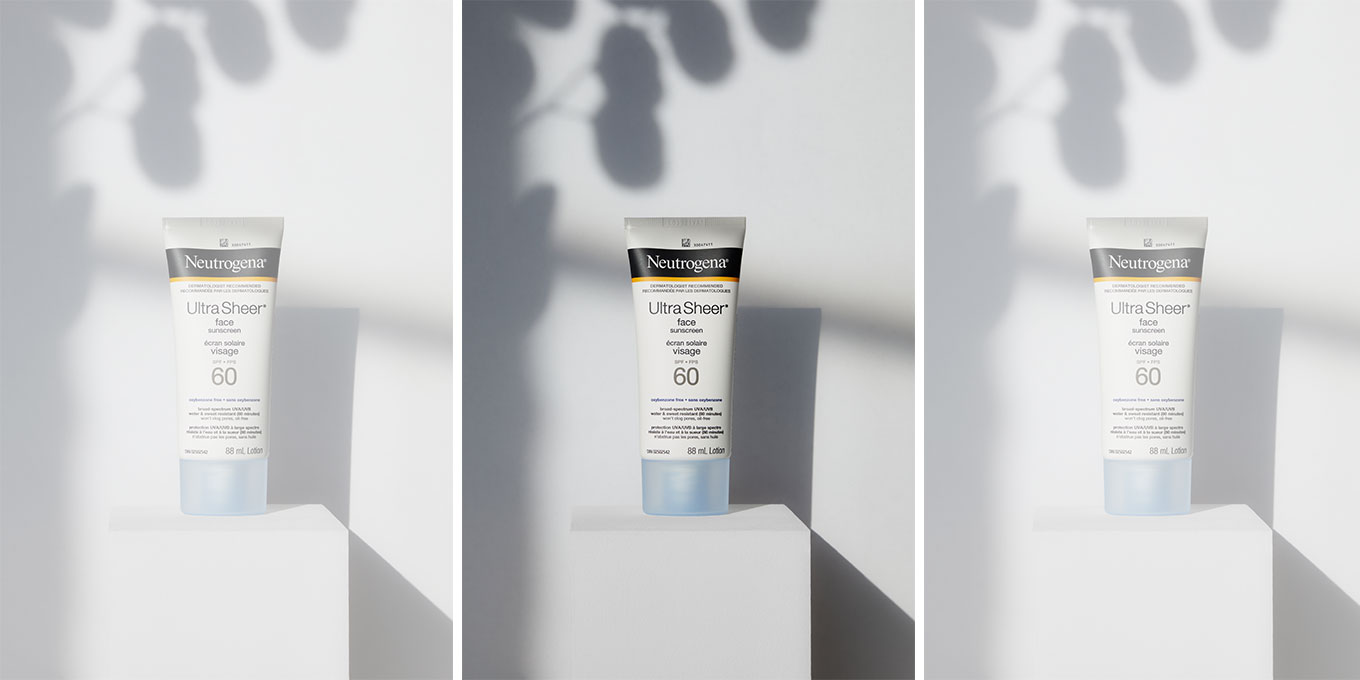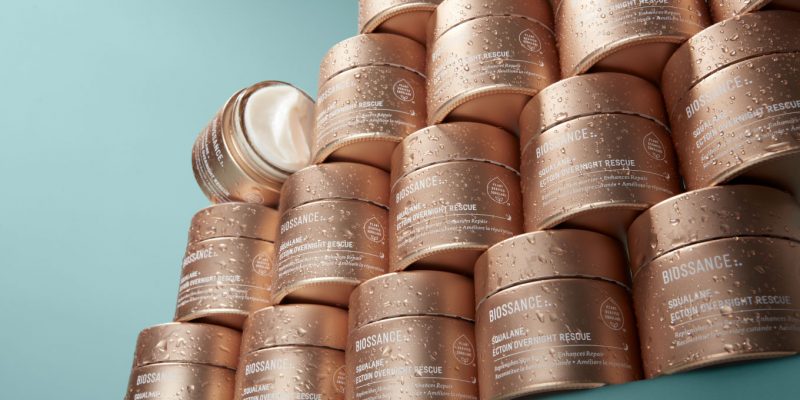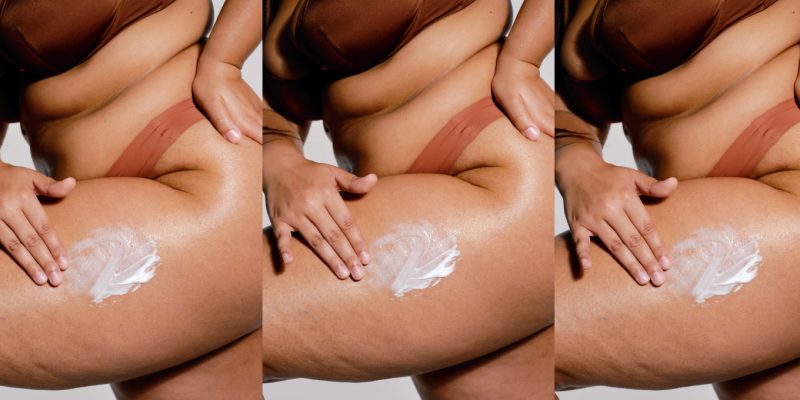Skincare
Discover the Derm-Approved Essential for Healthy Skin Year Round
How three little letters (SPF!) make a big impact—even in winter.
by : ELLE Canada- Dec 16th, 2021
Move over, moisturizer—sunscreen deserves the leading role in any winter-skincare lineup. “It’s important that people everywhere continue daily use of a broad-spectrum SPF 30 or higher regardless of the time of year, not just in summer or while on vacation,” says Dr. Katie Beleznay, a Vancouver-based dermatologist. That’s because UV rays don’t take a seasonal break—they have the power to get through clouds, fog and haze 365 days a year, she adds. UV exposure plays a role in the development of fine lines, wrinkles and hyperpigmentation (a.k.a. dark spots), but it is also linked to a serious health concern: skin cancer. According to the Melanoma Network of Canada, melanoma is the seventh most commonly diagnosed cancer in Canada and can affect anyone regardless of sex, age or race. That’s right: Using daily sun protection is essential for all skin tones. Even if you tan and don’t burn, you must still protect yourself from the sun’s harmful rays.
To learn how to keep our skin healthy and protected, we asked Beleznay to shed some light on the practice of 24/7 sun safety, and it all starts with the right formula—like the lightweight, non-greasy Neutrogena Ultra Sheer Dry-Touch Lotion. “It’s a good option for daily use and provides broad-spectrum protection from UVA and UVB rays,” she says. “The best sunscreen is the one you like for your skin and will use consistently.” Here’s more from the pro.
Why is it important to wear sunscreen all year round?
“The sun’s damaging effects on the skin are cumulative, and UV rays penetrate the clouds, so while [you have less] UV exposure during the winter months, you [still need to protect your] skin to avoid long-term harmful effects that lead to premature skin aging and increase the risk of skin cancer. In Canada, melanoma is one of the most common types of cancer for people age 15 to 49, and the majority of cases are caused by excessive sun exposure.”
How does winter weather impact sun exposure?
“It is important to wear sunscreen on all exposed areas in the winter because fresh snow reflects up to 88 percent of the sun’s UV rays, almost doubling a person’s UV exposure. UV rays are stronger at higher altitudes too—[so you’ll be exposed to them] while snowboarding or mountain skiing—and can get through clouds, fog and haze.”
What’s the best way to apply sunscreen?
“Apply a quarter to half a teaspoon to your face and neck in the morning after your skincare and before makeup, if you wear it. If you are applying makeup, it’s best to let sunscreen set on the skin for a few minutes first. And reapply sunscreen every two hours for maximum efficacy. Given that most people under-apply, I always say when in doubt, apply more than you think you need, and consider using a higher SPF. Always use at least SPF 30.”
Let’s talk about reapplication. Do I need to reapply if I’m just working from home?
“Reapplication is a crucial step in [ensuring] effective sun protection for your skin. Sunscreen efficacy does diminish over time, so we recommend reapplying every two hours. If you are inside all day, you will get less UV exposure, so less frequent reapplication may be sufficient. However, people often underestimate the sun exposure they get from a quick walk outside. In addition, UVA can pass through windows, so you should wear sunscreen even when inside or in a car.”
We know that earlier this year, there was a recall on a number of sunscreen products in Canada due to trace amounts of benzene found in them.* Is sunscreen still safe to use regularly?
“Yes, sunscreen use remains critical. As a dermatologist, I believe it’s important that people everywhere continue to take sun-protection measures, including the daily use of sunscreen. There are so many good options available these days that everyone should be able to find one they like and will use!”
This time of year, many Canadians take off to warm destinations. What are your top tips for sun protection while on vacation?
“Remember that water and sand can reflect the sun’s UV rays. During vacations in sunny, tropical destinations, it’s important to apply a sufficient amount of sunscreen and reapply every two hours or after swimming or sweating to ensure that you are protecting yourself from the sun’s harmful rays. Also, some people still talk about getting a ‘base tan’ before vacation to avoid burning. It is estimated that a base tan would only provide a sun protection factor of about three or less, and more importantly, when your skin tans, it is actually the result of mutations in your skin cells’ DNA. If you are truly after a tanned look, a safer option would be self-tanners or spray-on tans—and then slather on the sunscreen.”
*For more information regarding the voluntary recall of specific Neutrogena aerosol sunscreen products, visit neutrogena.ca/sunscreen-recall.
Newsletter
Join our mailing list for the latest and biggest in fashion trends, beauty, culture and celebrity.
Read Next

Beauty
The Best Met Gala Beauty Looks Of All Time
From Taylor Swift's 'Bleachella' era to Rihanna's iconic 2011 braids, meet the best beauty moments in Met Gala history.
by : Katie Withington- Apr 26th, 2024

Culture
Benny Blanco Says He Fell in Love With Selena Gomez Without ‘Even Noticing’ It
Allow Benny Blanco to tell the straight-from-a-rom-com story of how he realized his feelings for his girlfriend and longtime friend.
by : Alyssa Bailey- Apr 26th, 2024

Beauty
Tested and Approved: Your New Hydrating Skincare BFF
This new product has all of your skin’s thirst-quenching needs covered.
by : ELLE Canada- Apr 17th, 2024






